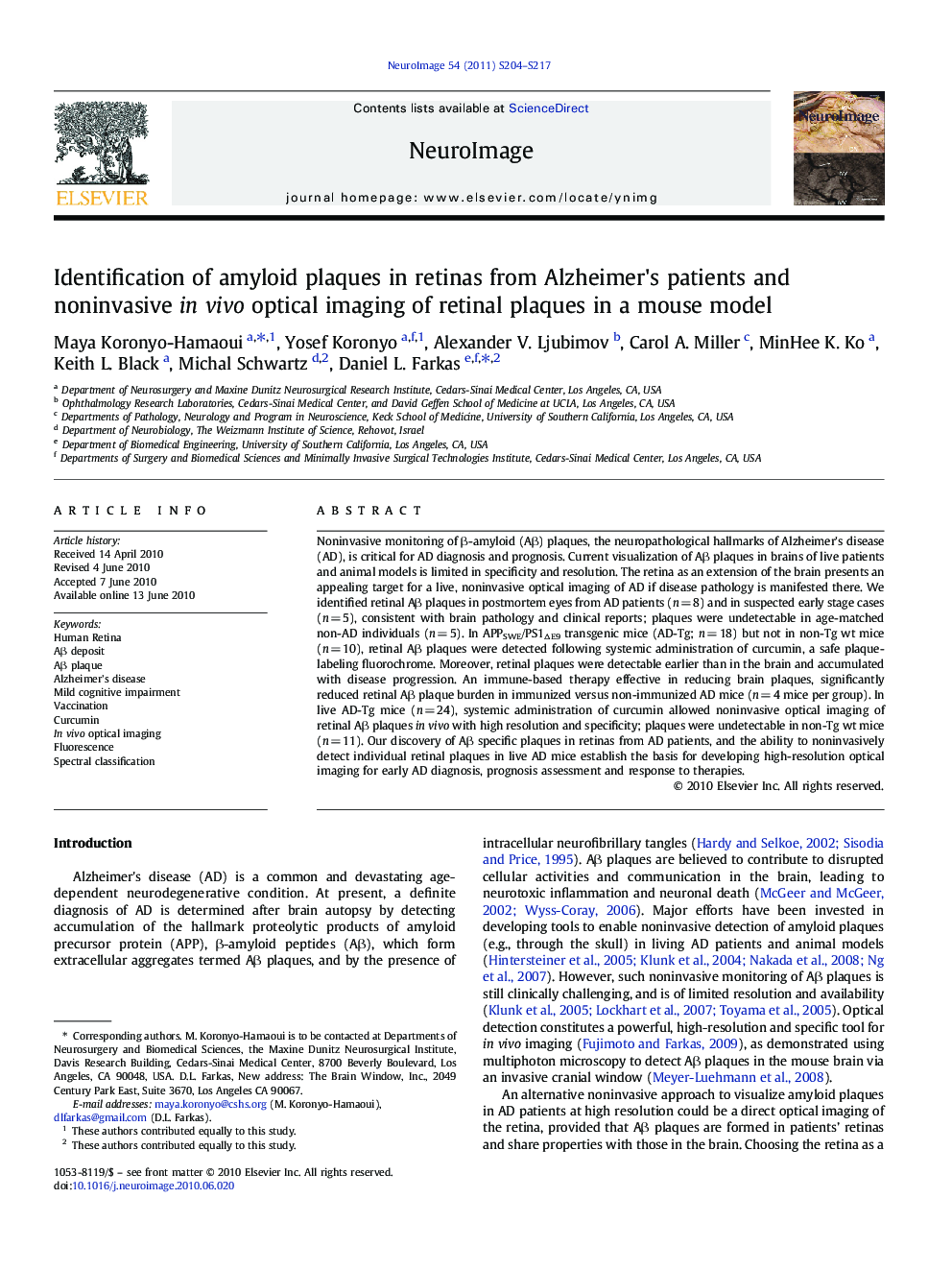| Article ID | Journal | Published Year | Pages | File Type |
|---|---|---|---|---|
| 3072237 | NeuroImage | 2011 | 14 Pages |
Noninvasive monitoring of β-amyloid (Aβ) plaques, the neuropathological hallmarks of Alzheimer's disease (AD), is critical for AD diagnosis and prognosis. Current visualization of Aβ plaques in brains of live patients and animal models is limited in specificity and resolution. The retina as an extension of the brain presents an appealing target for a live, noninvasive optical imaging of AD if disease pathology is manifested there. We identified retinal Aβ plaques in postmortem eyes from AD patients (n = 8) and in suspected early stage cases (n = 5), consistent with brain pathology and clinical reports; plaques were undetectable in age-matched non-AD individuals (n = 5). In APPSWE/PS1∆E9 transgenic mice (AD-Tg; n = 18) but not in non-Tg wt mice (n = 10), retinal Aβ plaques were detected following systemic administration of curcumin, a safe plaque-labeling fluorochrome. Moreover, retinal plaques were detectable earlier than in the brain and accumulated with disease progression. An immune-based therapy effective in reducing brain plaques, significantly reduced retinal Aβ plaque burden in immunized versus non-immunized AD mice (n = 4 mice per group). In live AD-Tg mice (n = 24), systemic administration of curcumin allowed noninvasive optical imaging of retinal Aβ plaques in vivo with high resolution and specificity; plaques were undetectable in non-Tg wt mice (n = 11). Our discovery of Aβ specific plaques in retinas from AD patients, and the ability to noninvasively detect individual retinal plaques in live AD mice establish the basis for developing high-resolution optical imaging for early AD diagnosis, prognosis assessment and response to therapies.
